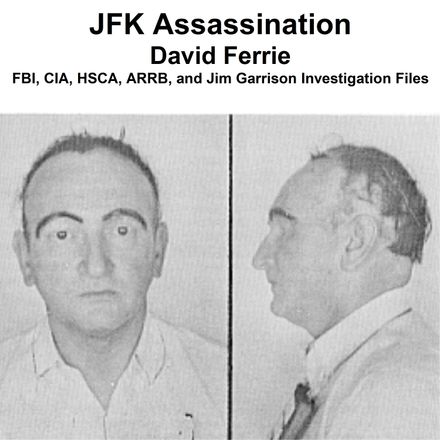$14.95
Soviet Biological Weapons Sverdlovsk 1979 Accident CIA, DIA, Dept of State, Navy & Army Files
Soviet Biological Weapons Sverdlovsk 1979 Accident CIA, Defense Intelligence Agency, Department of State, Navy & Army Files
1,447 pages of CIA, Defense Intelligence Agency, Department of State, Navy and Army files related to the Sverdlovsk anthrax incident.
The Institute of Microbiology and Virology in the Russian city of Sverdlovsk, 850 miles east of Moscow, reportedly aroused the suspicions of U.S. intelligence analysts in the 1970s because of certain characteristics observed by satellite. Photo interpreters identified tall incinerator stacks, large cold storage facilities, animal pens, sentries, and double barbed-wire fences.
These features, were not unlike those at the former U.S. offensive biological and toxin warfare facility at Fort Detrick, suggested that the Sverdlovsk facility might serve military purposes.
In April of 1979, an outbreak of anthrax occurred in the city of Sverdlovsk. On 2 April 1979, between the hours of 1330 and 1600, an accidental release of anthrax spores occurred at the military compound known as Compound 19 in Sverdlovsk. Reports of this outbreak did not begin to surface in Western news until early 1980. Later that year, articles in Soviet medical, veterinary, and legal journals described the outbreak as naturally occurring in livestock, causing 96 cases of anthrax in humans.
There was doubt about the data presented by the Soviet Union on this outbreak. It was speculated that the outbreak was not naturally occurring among livestock, but that it resulted from activities banned by the Biological Weapons Convention of 1972 (Convention on the Prohibition of the Development, Production, and Stockpiling of Biological and Toxin Weapons and on Their Destruction). All the cases occurred within 4 kilometers (about 2½ miles) downwind from a Soviet military microbiology facility, and it was suspected that the cases were from the accidental airborne release of anthrax spores.
Years later, Western analysts were permitted to review the outbreak to address the speculation. These analysts used data to determine that the anthrax outbreak did occur from the microbiology facility and was the largest outbreak of inhalation anthrax in history. Despite these findings, the Soviet Union maintained that the outbreak was from meat contaminated with anthrax spores. In 1992, then-president of Russia, Boris Yeltsin, admitted that the outbreak was exactly what Western analysts had determined. He stated that the air filters at the biologic facility had not been properly installed the morning of the release, allowing anthrax spores to spew out of the facility.
CIA Files
235 pages of CIA files covering the 1979 Sverdlovsk anthrax incident.
Highlights include:
An October 15, 1979 CIA report on rumors about a biological warfare accident in Sverdlovsk involving between 40 and 60 deaths in May 1979.
A January 16, 1980 report noting that the Soviet Union brought the outbreak under control not until late May or early June, and that both Defense Minister Ustinov and Health Minister Petrovskiy came to Sverdlovsk, that they were likely overseeing the decontamination effort.
A January 28, 1980 report that new intelligence strengthens allegations that an accident at a BW (biological warfare) installation caused civilian casualties in southern Sverdlovsk during April 1979.
DIA Files
131 pages of Defense Intelligence Agency (DIA) FILES.
Highlights include:
A November 9, 1979 report titled, "Biological Accident Rumored," summarizing beliefs about the reported accident in Sverdlovsk within the Defense Intelligence Agency.
A 1980 memo shows the U.S. intelligence community beginning to believe that the reported deaths in Sverdlovsk are probably linked to the release of anthrax from a Soviet biological warfare facility in Sverdlovsk. It says, "Evidence that the accident involved a BW agent, though circumstantial, is compelling." It gives as evidence is the fact that the Soviets used military forces almost exclusively to deal with the outbreak. The report points to the fact that the Soviets concealed the exact nature of the disease. The memorandum concludes that "The release of large quantities of anthrax spores, a candidate BW agent, offers the most logical explanation for the sequence of events that occurred in Sverdlovsk during April and May 1979." The memorandum summarizes the information given out by the Soviet Union, blaming the outbreak on anthrax-contaminated meat.
A March 1980 DIA report documents the Soviet medical response, the casualties, and decontamination efforts.
A document contains information about the Moscow Biochemical Department of Moscow Medical University, and the use of its faculty and students with biological warfare activities in Sverdlovsk.
A report of an August 22, 1990 article in the Russian weekly paper, Literaturnaya Gazeta, that concludes that the April 1979 anthrax outbreak in Sverdlovsk was due to an accident at "Garrison 19," a secret Soviet military biological warfare facility. The article also says the military is continuing to try to coverup this incident.
State Department Files
33 pages of State Department files.
Highlights include:
A March 1980 report giving the U.S. position on the information provided by the Soviets on the Sverdlovsk Incident
A 1983 memorandum regarding Legal Issues Associated with Formally Charging the Soviet Union with Violation of the Biological Weapons Convention.
Material in the collection also includes the following monographs and reports including coverage of Sverdlovsk:
The War Next Time Countering Rogue States and Terrorists Armed with Chemical and Biological Weapons (1992) - This USAF Counterproliferation Center monograph includes information about the Sverdlovsk Incident.
Medical Aspects of Chemical and Biological Warfare 2002 - Produced by the Medical Department of the Army.





